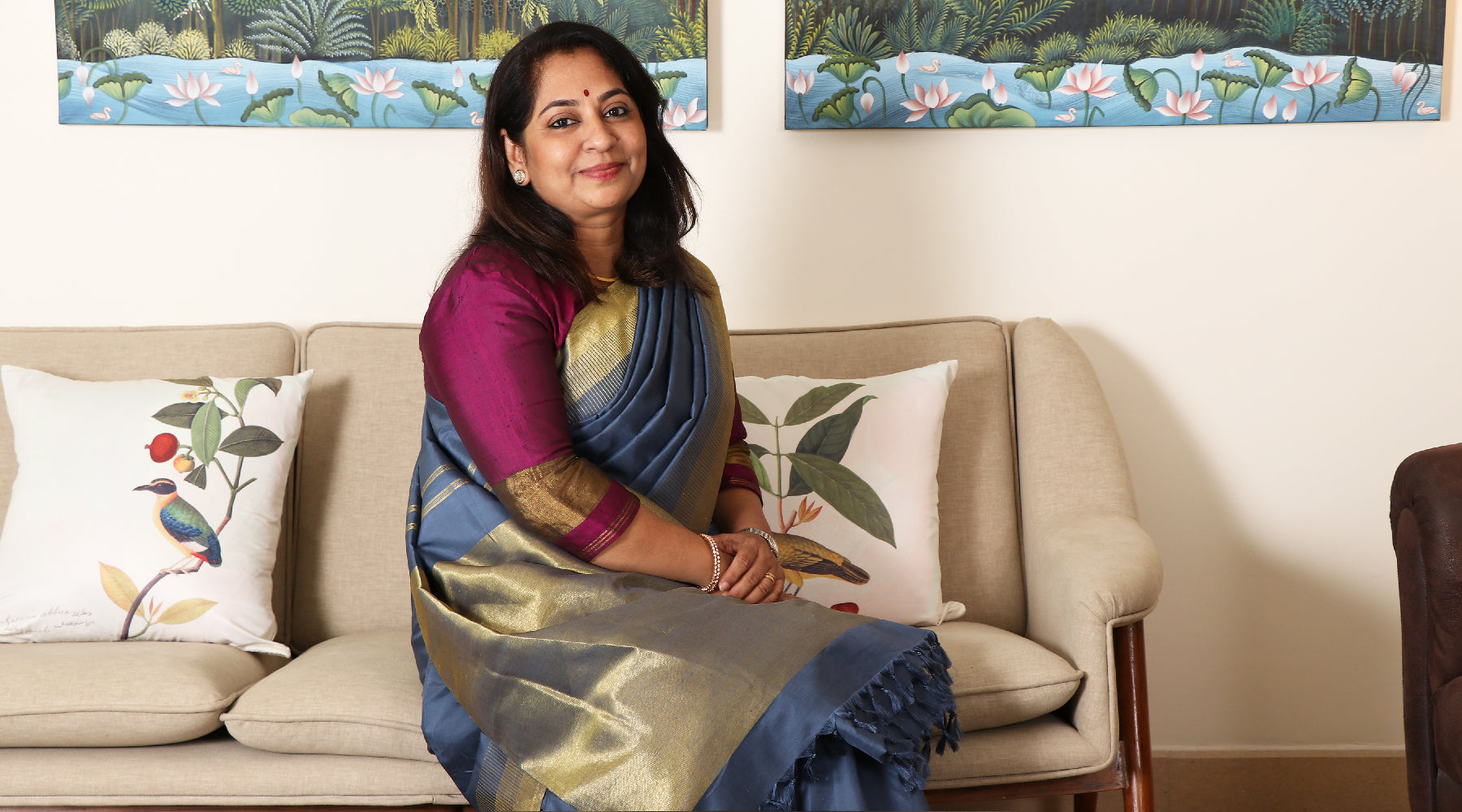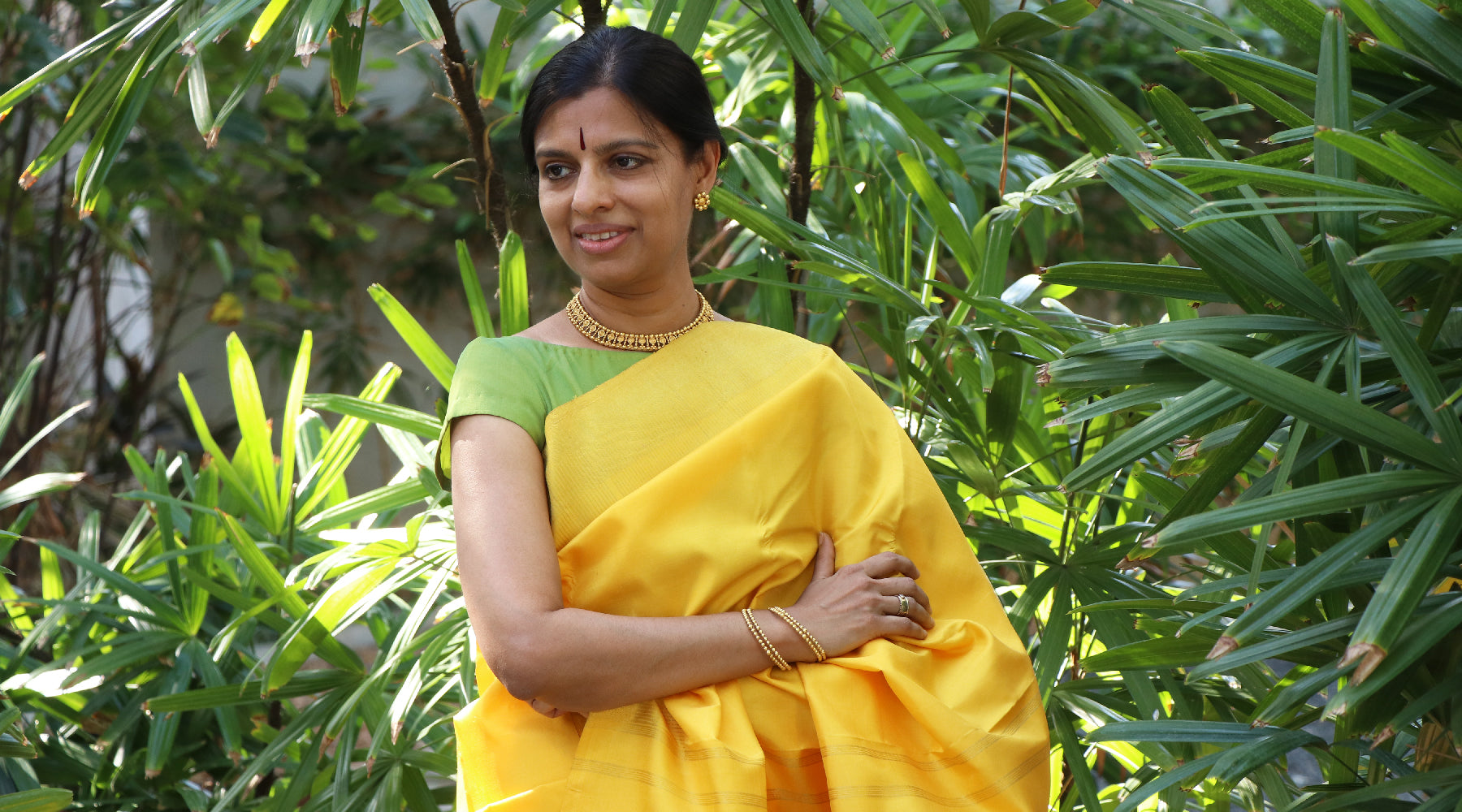KANAKAVALLI VIGNETTES : Anu Vardhan - Looks Like It Matters

Nearly two decades ago while working as an AD (Assistant Director) with acclaimed filmmaker, Santosh Sivan, Anu found her calling as a costume designer. “We were a small crew and I’d help with the clothes too. We were working on Ashoka and one day, Santosh Sivan said, ‘Anu, you are really good at this. You must make this your profession.’” That film kick started what has been a very fulfilling career in the business of creating costumes and looks for characters across cinem, television and advertising. Taking time off a very busy schedule, and fitting this interview before leaving for Mumbai for a half-day long discussion with a filmmaker, Anu Vardhan, dons a kanjivaram sari and speaks to Akhila Krishnamurthy about her own journey with the world of fashion, her relationship with the sari and some wardrobe must-haves. With an innate sense of fashion that is classic, contemporary and casual at the same time, and with a keen understanding of colours and textures, Anu breezes through Kanakavalli and picks her favourites…
LOOKS LIKE IT MATTERS..
What is the first step in the process of creating a look for a character?
The very first step is simply listening to what the director has in mind; he narrates the script and the characterization of the actors in it, and briefs me about what he is expecting. I then internalize his idea and begin planning. We discuss three or four looks and zero in on one look and try it out on the actor. We see if the actor is comfortable in the costume, and most importantly, if he/she is convinced that the look will enable her/him to bring the character alive. Once the actor is convinced about a specific look, with the consent of the director, and the technical in-charge, we finalise the look.
What are the factors you take into account while designing the look for a specific character?
The most significant factor is that it has to relate fully to the script. You see, I cannot just create anything from my mind. It has to fit into the script, and look believable. Another very important consideration, especially when you are designing for the big stars, is that you must remember that they have a huge following, and people are going to imitate what they see on screen, so one must be sensitive and careful about the impact the design is going to make on the audience.
Amongst the characters you have designed for, which one is your most favourite? Why?
I enjoyed working on Rajinikanth Sir’s look for Kabali. Now, I am working on the costumes for an upcoming film starring Vivek Oberoi, Kajal Agarwal, Akshara Haasan, Ajith, and a few other Hollywood actors. Each of them is playing a distinct character, and it is challenging as well as interesting, at the same time.
Which character was the most challenging to design a look for?
Usually, very simple costumes are among the most challenging. Sometimes, a character needs to wear a single costume throughout the film, so I have to ensure that the costume holds the interest of the audience, and does not become too monotonous. I really have to work on such outfits. For instance, in the Tamil film Naanum Rowdy Dhaan, Nayantara was playing a regular girl who was hearing impaired. She had to look ordinary, yet lively, and not somber or sad. So we went through several iterations and finalized her look for the film; in it, she wears a lot of colourful tops and skirts, and a lot of crop tops with denims. She looked real, yet at the same time the costume did not go overboard. So, simple things can be a bit difficult and challenging.
Do you have to detach from your own likes and dislikes to design objectively? How do you do that?
I have been on this journey for a long time now, so I have learnt that art. I keep in mind that what is fashionable to me, may not be fashionable to everyone. Fashion is not static; it’s constantly evolving. I try to understand different cultures, contexts, situations, and design for the character keeping these aspects in mind. I think when you are determined to stick to what the script demands, your likes and dislikes naturally take a backseat.
What would you consider three must-haves in a woman's wardrobe?
A white shirt, a good pair of denims, and a watch.
What are the essentials that you never leave home without?
My watch and my lip balm.
What does your make-up kit comprise of, right now?
I wear very minimal make-up, so just a kajal (eye pencil) and a lip balm.
From the current fashion trends, which one do you use most, personally and in your design?
I think the cotton dresses available in the market currently are very nice and interesting. They are hand-woven, have pockets, easy to carry off, and are perfect for the summer.
Who is your fashion icon?
There are many, but I like the way Victoria Beckham dresses and carries herself.
What is your all-time favourite outfit?
The sari.
What does the sari mean to you?
I have always been very fond of the sari. I guess when you are brought up in a traditional South Indian household, you become accustomed to it. I feel that when one wears a sari, it is always a sign a celebration. Somehow, when we decide to wear a sari, we naturally also pick out some accessories to go with it, and it feels very celebratory. I wear the sari to work twice a week. Because of the weather, I usually choose cottons because they are more comfortable.
Three colours and styles in blouses that every woman must have?
Black, gold and indigo. These days, the crop top style blouses are in vogue, and they are really comfortable, not too tight or clingy. The casualness and comfort of this style makes it very appealing to me.

What I'm wearing - "When I first visited Kingsley, it was Ahalya who chose this sari for me. Usually, it is I who pick outfits for people, but this specific sari was picked for me by Ahalya. I really like its contrast green and red border; it is striking and contemporary."
- Anu Vardhan, in conversation with Akhila Krishnamurthy
EXPLORE ANU'S GUEST CURATION HERE



